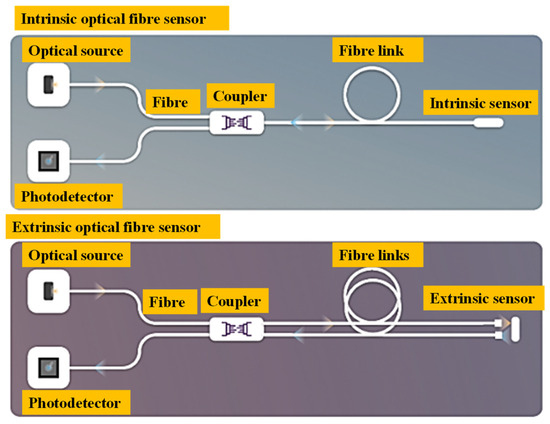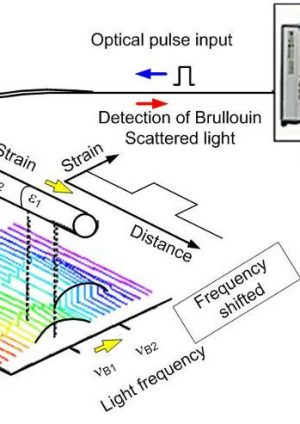Simplifying Measurements with a High-Accuracy Optical Fibre Diameter Analyser
Optimize Your Fiber Optic Efficiency: Understanding Optical Fibre Diameter Analyser Modern Technology
The performance of fiber optic systems is critically influenced by the precision of their diameter, an element usually overlooked in the quest of optimal signal stability. Recognizing the modern technology behind optical fiber size analysers reveals the detailed equilibrium between dimension precision and production high quality.
Significance of Optical Fiber Size
The size of optical fibre plays a vital role in identifying the performance and efficiency of interaction systems. It influences several key criteria, including the mode of light breeding, depletion, and data transfer ability. Bigger diameters normally permit several light modes, assisting in higher data transmission rates. Alternatively, smaller sizes tend to sustain fewer settings, which can boost signal clarity and minimize crosstalk.

Additionally, understanding the diameter's effects can result in cost financial savings by minimizing the need for signal amplification and repeaters in substantial networks (optical fibre diameter analyser). In final thought, the value of optical fibre size can not be overstated, as it directly impacts the total efficiency and reliability of contemporary interaction systems
Just How Size Impacts Signal Quality
Signal high quality in optical fiber systems hinges substantially on the diameter of the fiber. The size influences a number of key criteria, consisting of depletion, transmission capacity, and modal dispersion. A smaller sized diameter can result in greater attenuation prices, causing signal loss as light travels with the fibre. This depletion can compromise the honesty of the transmitted data, bring about a decrease in signal top quality, particularly over fars away.
Conversely, bigger sizes generally enable boosted light capture and lowered modal dispersion, improving signal quality. In multimode fibres, a bigger core diameter can sustain several light settings, however it might additionally introduce intermodal diffusion, which can break down signal high quality. Picking the optimal fibre diameter is crucial for attaining the preferred efficiency in specific applications.
Furthermore, the interaction in between the fibre diameter and the wavelength of the light utilized plays an essential duty in establishing the efficient transmission distance and general signal honesty. Recognizing just how fibre size affects signal top quality is important for network designers and engineers striving to maximize optical fibre systems for dependable, high-speed data transmission.
Introduction of Size Analyser Innovation
In numerous optical fibre production procedures, precise dimension of fibre diameter is vital for ensuring constant performance and top quality (optical fibre diameter analyser). Size analysers are advanced instruments designed to assess the physical measurements of optical fibers with high precision. They employ advanced optical and laser technologies to gauge the size, ovality, and concentricity of the fibre, thus giving important information for quality assurance
These analysers can run in-line during the production procedure or as part of off-line screening methods. In-line systems make it possible for real-time surveillance, permitting makers to readjust parameters instantly, thereby maintaining optimum manufacturing problems. Off-line analysers, on the other hand, provide comprehensive examinations of sets, making sure that any kind of inconsistencies from defined tolerances are determined and addressed.
Size analysers dramatically contribute to the decrease of problems in optical fibers, enhancing total product integrity. By constantly measuring vital criteria, these innovations help with compliance with market criteria and specifications. As the demand for high-performance optical fibers remains to rise, the duty of size analysers comes to be progressively essential in accomplishing the desired quality and efficiency requirements in fibre optic systems.
Trick Attributes of Fiber Diameter Analysers
Although numerous models of fiber diameter analysers exist, they generally share several vital attributes that enhance their functionality and integrity. Among the most considerable features is high-resolution dimension capabilities, which make certain precise size analyses, essential for keeping quality assurance in fiber production. Furthermore, many analysers incorporate innovative optical sensors created to find minute variations in fiber diameter, thus giving invaluable data for procedure optimization.
Another essential feature is real-time tracking, allowing operators to get immediate feedback on fibre diameter throughout the production procedure (optical fibre diameter analyser). This ability promotes fast changes and minimizes the possibility of flaws. Lots of analysers additionally come equipped with easy to use interfaces, allowing drivers to quickly browse via data and settings results
Additionally, robust data storage space and analysis functionalities are important for tracking historical efficiency patterns and ensuring conformity with industry standards. Some versions also use connection options for assimilation into existing production control systems, boosting overall functional performance. Compact and mobile designs enable for adaptable deployment within production atmospheres, ensuring that quality guarantee procedures are smooth and efficient. These attributes jointly contribute to the efficacy of fibre click reference size analysers in enhancing fiber optic efficiency.
Best Practices for Fiber Optimization

First, routine calibration of optical fibre size analysers is crucial. This ensures exact dimensions and minimizes possible inconsistencies that can impact performance. Next, preserving a tidy workplace is important; dirt and impurities can result in signal deterioration.
Additionally, it is very important to choose fibers that satisfy certain application demands. This entails examining variables such as attenuation, data transfer, and environmental conditions. Appropriate setup strategies need to likewise be followed, consisting of preventing sharp bends and extreme tension, which can compromise fiber integrity.
Additionally, utilizing advanced tracking systems can facilitate real-time efficiency evaluations, enabling timely identification of problems. Normal screening and maintenance should be carried out to ensure that fibres continue to be within optimum operational criteria.
Lastly, training personnel on the most up visit this web-site to date fibre optimization technologies and techniques will certainly improve their capacity to carry out effective approaches. By adhering to these ideal techniques, companies can substantially boost the efficiency and life-span of their optical fibre systems, making certain reliable interaction and data transfer.
Conclusion
To conclude, the combination of optical fibre size analyser technology is crucial for optimizing fibre optic efficiency. By ensuring exact measurements of fiber dimensions, these analysers significantly enhance signal high quality and minimize losses throughout data transmission. Regular calibration and upkeep of the analysers are critical to support ideal efficiency and conformity with market criteria. Eventually, the application of this innovation promotes improved data transmission rates and strengthens signal honesty, adding to the total efficiency of fibre optic systems.
Signal high quality in optical fiber systems pivots substantially on the diameter of the fiber.In lots of optical fibre manufacturing processes, accurate dimension of fibre diameter is necessary for making sure constant efficiency and top quality. As the demand for high-performance optical fibers proceeds to increase, the duty of diameter analysers comes to be increasingly crucial in attaining the wanted quality and efficiency requirements in fibre optic systems.
These attributes jointly contribute to the effectiveness of fiber size analysers in maximizing fiber optic efficiency.
In verdict, the assimilation of optical fiber diameter analyser modern technology is essential for optimizing fibre optic efficiency.